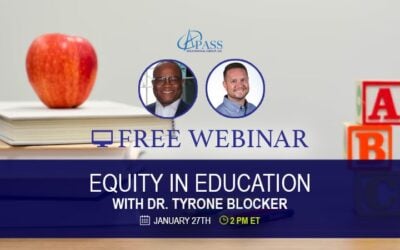Blog
Stay up-to-date on the latest Higher Education, K-12 and Curriculum Design content.
Recent Blogs
Digital Literacy: 5 Methods K-12 Publishers Can Implement for Their Products
Publishers know teachers want resources to help their students. Besides that, teachers face the same challenges in digital literacy as they did before the pandemic. Still, publishers provide educators with the tools they need to succeed. Yet, teachers seek solutions for their educational challenges, and publishers provide these solutions. Publishers can use these six methods to improve their products for digital literacy.
World Translation: 5 Methods Publishers Can Utilize for Their Content
Why should leaders invest in translation services? Machine translation services deliver close enough results. Still, publishers do well when they get translations right. Leaders face many barriers in today’s business climate. Yet, a good partnership with an expert translation partner yields a better return. Here are five methods leaders can use to make their translated content stand out for world translation.
Educational Equity Part 2: Creating a Student Ready School for Community Colleges
For this second installment on educational equity for community college readiness, we offer additional solutions for creating student-ready schools. While community college students face unique challenges, school leaders can ensure better success with key strategies. Community college leaders can apply these additional strategies for a student-ready campus.
Course Design for Higher Ed and K-12: Using a Learner-Centered Framework and Other Methods
College leaders can take a variety of approaches to course design. One method is learning-centered design. This design method focuses on the needs of the students as opposed to a traditional topical approach that focuses on the subject matter itself. To create effective and sustainable courses, designers should apply strategies that lead to successful learner experiences. Therefore, higher educational and K-12 leaders can employ this strategy and others to design effective courses.
Personalized Learning: What Ways Can Publishers Focus on the 3 Models?
Education is moving from theone size fits all model of instruction. Teachers have tailored instruction to their students for years. Yet, publishers did not offer educators personalized learning options in their textbooks. Now, content is more than textbooks. Today, publishers make content for various, digital platforms. Besides that, publishers provide customized learning experiences for students. Publishers can utilize these three models to support personalized learning.
Webinar: Equity in Education | January 27th at 2:00 p.m. (ET)
ou’re invited to register for our upcoming webinar on Equity in Education on January 27th at 2:00 p.m. (ET). This educational webinar will be led by Dr. Tyrone Blocker of Blocker Education, a leader with over two decades of educational experience from Pre-K to K-16, along with A Pass’s Dan Souers. The webinar will focus on various issues that are impacting equity in K-12 and higher education like access. Register Today!
E-book Readers: 4 Apps That K-12 Publishers Can Use
E-book let publishers distribute their textbooks on their terms. Besides that, e-book readers allow publishers innovative delivery methods without costly investment. Also, e-book readers support K-12 districts to buy more content. Publishers can provide more variety to their customers. Publishers help schools meet the individual needs of their readers. Yet, the e-book reader market is competitive. Which app should a publisher use? Here are four apps publishers can use to make content that appeals to K-12 readers.
Educational Equity: How Community Colleges Can Create a Student Ready School
Community colleges provide accessible and affordable education to students. Learners can earn credentials faster, at lower prices, using better flexible schedules than traditional four-year colleges. However, community colleges are experiencing enrollment and retention challenges, partly spurred by the pandemic. Many two-year colleges have responded to the immediate requirements of hybrid and virtual classes. However, more solutions are needed to meet the demands of this unique student population. Therefore, community college leaders can provide educational equity by making their colleges student-ready.
Learning to Read: The Changes Publishers Must Include to Improve US Literacy
The pandemic has caused disruptions in many areas of education, including foundational reading skills. Some students were lagging before the pandemic, and upper elementary teachers noticed the increased skills gaps. Many states are responding to the issue by implementing the science of reading principles into their curriculum. They see the results. Publishers can close the gap by providing the best materials based on the science of reading and other methods.
Teaching Burnout: 4 Methods College Leaders Can Apply
As the pandemic wages on, educators wrestle with teaching burnout. Summer did not give weary instructors a much-needed rest. Mostly, faculty spent a frantic summer retooling classes for multiple delivery scenarios. Besides that, hybrid learning demands new skills from instructors, support staff, and students. College leaders do not need to standby feeling helpless. College leaders can employ 4 methods to address teaching burnout for faculty.
4 SEL Strategies for Digital Learning for K-12 Publishers
Social-emotional learning (SEL) facilitates learning for K-12 students as an integral part of their education. The methodology helps students form a healthy sense of self-awareness, interpersonal skills, and self-control that extend far beyond the classroom. Toward that end, K-12 publishers can create digital materials for social-emotional learning (SEL). These efforts support districts, schools, and teachers, which aids student development and learning. Publishers can utilize these 4 ways to support SEL digital learning.
Upskilling: What Programs Can Higher Ed Leaders Create?
Research shows that incoming freshmen are not as prepared as they need to be for success in college. Similarly, businesses recognize college grads lack essential skills to perform their job duties. Many reasons exist for the skills gap for high school graduates, college attendees, recent graduates, and adult learners. College leaders can use these different examples below to create and provide upskilling solutions.












